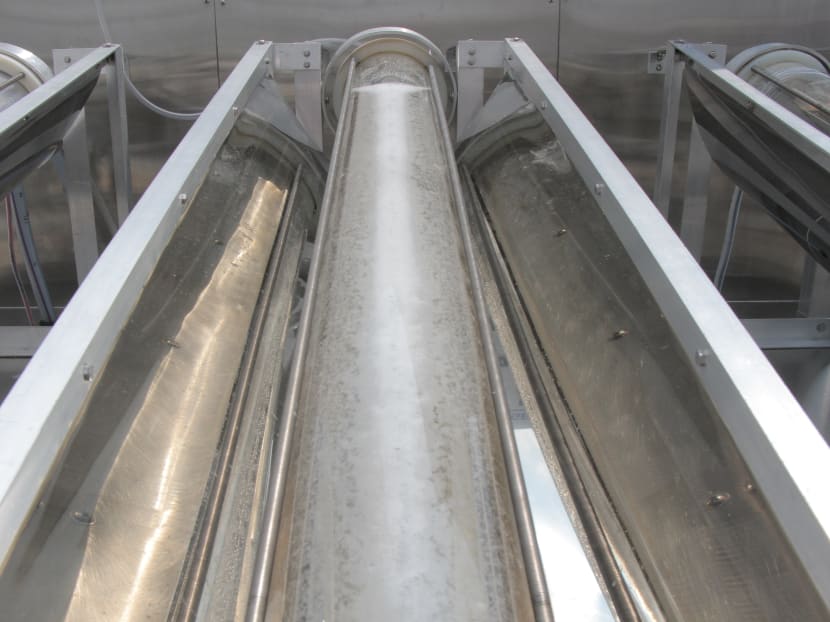Local scientist generates hydrogen gas from sunlight, water
SINGAPORE — A rooftop set-up capable of harvesting solar energy to split water into hydrogen and oxygen has been developed by a team of researchers led by Dr Ernest Chua, Assistant Professor at the Department of Engineering at the National University of Singapore.


SINGAPORE — A rooftop set-up capable of harvesting solar energy to split water into hydrogen and oxygen has been developed by a team of researchers led by Dr Ernest Chua, Assistant Professor at the Faculty of Engineering at the National University of Singapore.
Known as the Photocatalysis-Electrolysis-Photovoltaic Tri-Hybrid System, it captures solar energy through solar panels to power the electrolytic process that splits water into its constituent elements through applying direct current, with specially engineered photocatalytic chemicals enhancing the rate of that splitting in the presence of sunlight.
Hydrogen gas, used in fuel-cell vehicles and a major component of synthetic fuel, is produced in this system at 99.8 per cent purity and at a rate of 100–120 litres per hour (or roughly 1kg per day, under standard compression conditions). At this rate, the hydrogen used directly as fuel could power the communal lights of one floor of a building, which could mean up to $1,500 of annual cost savings per floor of a typical HDB block.
“By using renewable resources such as water and sunlight, our method offers an inexpensive and clean way to produce hydrogen,” said Asst Prof Chua. “The system can be installed easily on building rooftops, converting them into energy-generating buildings.” This reduces their carbon footprint and brings them closer to becoming green buildings, he explained.
The system comprises two solar panels, a hybrid hydrogen filtration system and three reactor tubes that each generate 40 litres of hydrogen per hour even during the night, when the system runs on batteries that are charged during the day. Clean water and even rainwater can be pumped into the system — in fact, rainwater gives improved hydrogen production by up to three times the rate of clean water, due to the presence of compounds in rainwater that enhance photocatalytic activity, according to Asst Prof Chua.
The current methods of generating hydrogen include cracking hydrocarbon compounds, which produces harmful nitrogen oxides, and steam reforming, which is clean but energy intensive. Asst Prof Chua’s Tri-Hybrid System boasts versatility in modifying it for different output requirements, ease of deployment and low capital costs.
The system is currently a prototype, which was made possible through a $242,000 Proof-of-Concept grant awarded by the National Research Fund last year.
On what is next for the Tri-Hybrid System, Asst Prof Chua discussed his plans to modify its design for various purposes. “Our system can be designed for and built on floating platforms or barges in reservoirs to split water for hydrogen production,” he said. “I can foresee a single system capable of producing up to 50kg of hydrogen, equivalent to the present amount of hydrogen consumed by one or two fuel-cell stations in fuelling about 20 to 25 vehicles.”
Asst Prof Chua also suggested installing the system on the roof of houses so that fuel-cell vehicles can be charged overnight, or creating a portable system integrated into fuel-cell vehicles to produce hydrogen on the go and provide a self-renewing fuel system, which will reduce the frequency of refuelling needed.





